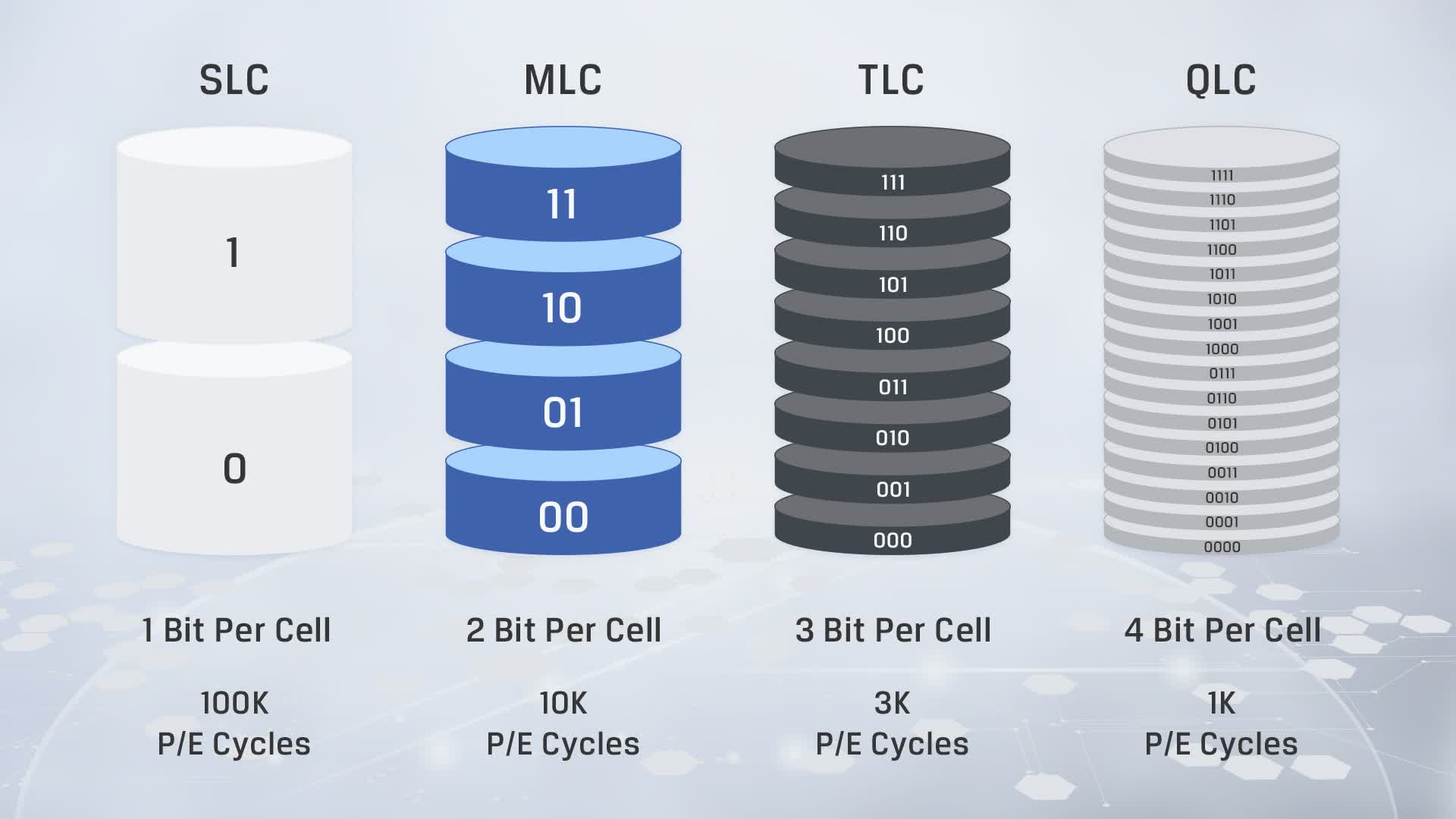Here's the story behind it
SLC NAND offers the highest speed and durability because it stores only 1 bit per cell. It's widely recognized as the most reliable and longest-lasting NAND type. While SLC is now rare in consumer SSDs due to cost, it's still considered the gold standard for performance and endurance in enterprise and specialized applications.
MLC, eMLC, and TLC all offer greater storage density at the expense of performance and endurance.
NAND flash memory comes in several types, each with different characteristics in terms of speed, durability, and cost. Here's a more detailed overview:
SLC (Single-Level Cell)
SLC stores one bit per cell – either a 0 or a 1. This simplicity allows for very fast read and write speeds, low error rates, and high endurance (i.e., more write cycles before the cell wears out). Because of its reliability and speed, SLC is considered the fastest and most durable type of NAND flash.
SLC can typically handle around 90,000 to 100,000 write cycles per cell, making them the most reliable choice for heavy workloads. However, it is also the most expensive to manufacture, which limits its use to enterprise applications and high-performance industrial systems.
MLC (Multi-Level Cell)
MLC stores two bits per cell, which effectively doubles the storage capacity compared to SLC using the same amount of physical space. However, because each cell must differentiate between four voltage states instead of two, read and write operations are slower, and error rates are higher.
MLC drives are more affordable and offer more storage space than SLC, but they generally have lower endurance – typically rated between 3,000 and 10,000 write cycles per cell. MLC is commonly used in consumer-grade SSDs because it offers a good balance between cost and performance.
eMLC (Enterprise Multi-Level Cell)
eMLC is a variation of MLC designed for enterprise environments. It undergoes more rigorous testing and uses enhanced error correction and wear leveling, resulting in improved endurance and more stable performance. Typically, eMLC can handle between 10,000 and 30,000 write cycles per cell, positioning it as a middle ground between MLC and SLC in both performance and cost.
It's a common choice for data centers and professional workstations that require greater reliability and longevity than standard consumer drives but don't need the full performance of SLC.
TLC (Triple-Level Cell)
TLC pushes data density even further by storing three bits per cell, allowing each cell to represent eight different voltage states. This dramatically lowers the cost per gigabyte and increases storage capacity, making TLC ideal for budget-conscious consumers.
However, this complexity also leads to slower performance, greater susceptibility to data errors, and reduced durability – usually around 500 to 3,000 write cycles per cell. While not suitable for demanding workloads, TLC drives are adequate for everyday tasks like web browsing, media playback, and light office work.
PLC (Penta-Level Cell)
PLC is the latest advancement in NAND flash technology, designed to store five bits per cell, which requires each cell to differentiate among 32 voltage levels. This should dramatically increase storage density and reduces cost per gigabyte even further than QLC.
However, as of now mid-2025, PLC NAND is still in research and development stages. A few manufacturers like Kioxia and Western Digital have demonstrated experimental PLC technology, but there are no mainstream SSDs using PLC NAND yet. It may appear in ultra-high-capacity, low-cost archival storage solutions in the future.
